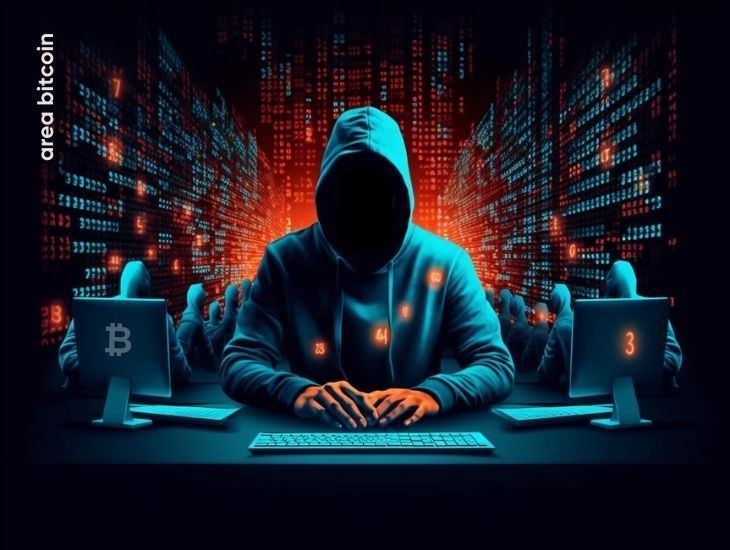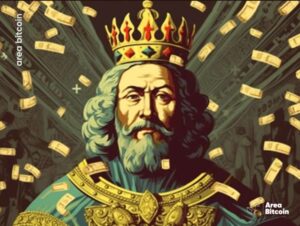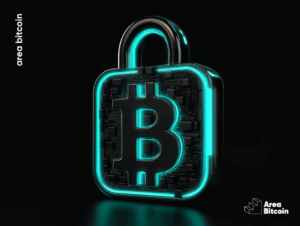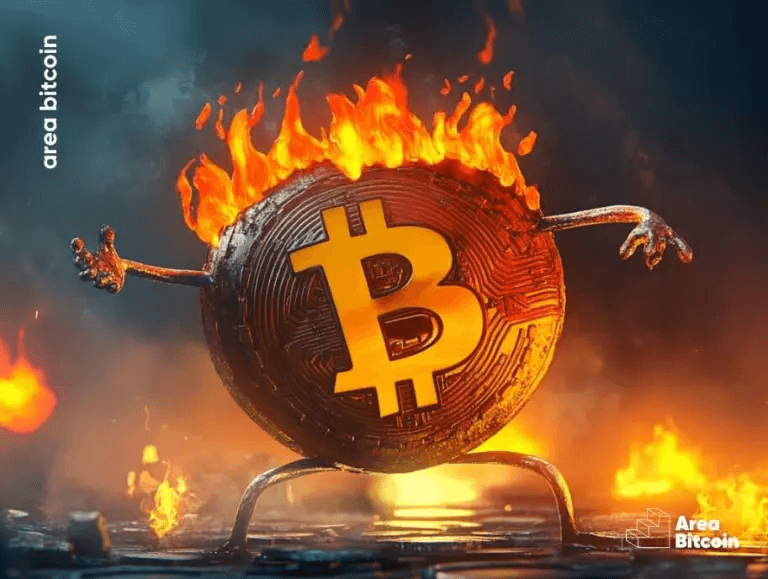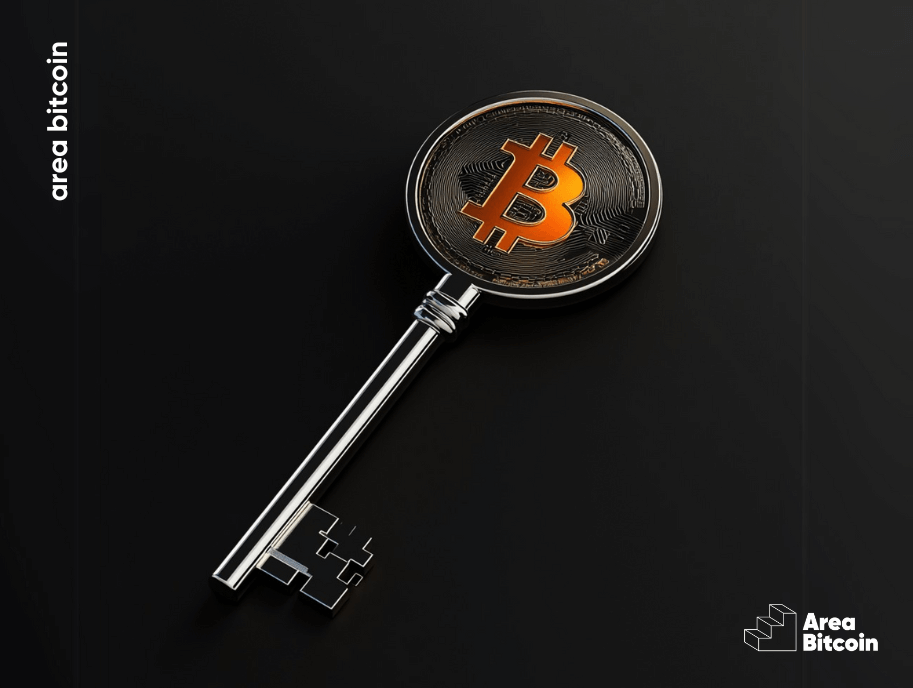Unlike traditional financial systems, where Central Banks or governments wield control, Bitcoin operates on a radically different model – decentralization. This means that no individual, company, or government has exclusive control over the network.
Even so, when we talk about how Bitcoin is indeed decentralized, haters often say:
- “Oh, but bitcoin is in the hands of 6 mining pools,”
- or that “Bitcoin Core developers control bitcoin.”
Are these accusations true? Who really controls the Bitcoin network? Let’s investigate in this article.
Bitcoin’s Decentralization
The Bitcoin network is a globally distributed system, consisting of many independent nodes operating under a unified set of rules – the Bitcoin protocol. Each node in the Bitcoin network maintains a copy of the blockchain ledger, verifies transactions and blocks independently, and only accepts those that follow the protocol rules.
This decentralized and distributed nature makes the system extremely resistant to censorship or failure. Thus, even if some nodes are disabled, the system as a whole will continue to operate. And since all transactions are verified by many independent nodes, it is almost impossible to alter their history once consolidated.
The role of nodes
Nodes are devices that you can run from your own home and connect directly to the network.
Developers have fought throughout Bitcoin’s history to keep blocks limited to 1MB in size so that it’s light and easy to run a Bitcoin node, even on the simplest computer, a raspberry pi with a memory card.

Today there are more than 15,000 identifiable nodes, but this is not the real amount of full Bitcoin nodes.
A survey of the network done by developer Luke Dash Jr shows that there are actually over 50,000 Bitcoin nodes, and for privacy reasons, they use mechanisms like Tor to not be easily detected.

The primary role of the nodes is to enforce the consensus rules of the protocol, meaning even if miners band together in mutiny against the Bitcoin network, the nodes have the power not to accept malicious blocks that do not follow the consensus rules.
Therefore, the nodes ensure the rules are followed even if participants turn against the protocol. This forces the network’s honesty to follow the rules everyone initially agreed on.
This is very different from the financial system we have today. In the fiat system, those who cheat the rules are rewarded; therefore, crime pays. The correct ones are considered fools and idiots because they don’t take advantage of the system’s flaws at the expense of others.
There are no shortcuts in Bitcoin, it is the opposite of the fiat system!
Bitcoin rewards honesty and, therefore, any attempt to corrupt the system is ineffectual. The network simply ignores these attempts and moves on to the next honest block.
Thus, Bitcoin provides honest people an opportunity to reclaim their voice in a corrupt world, where there is no trust that people will do what is right instead of what is most convenient.
The role of Bitcoin developers
Bitcoin developers also play an important role. They maintain and update the Bitcoin Core software, proposing improvements and bug fixes.
This software is open source, and anyone can contribute suggestions for improvements and updates. Everything is available on GitHub, and if someone wants to merge a change they made in their own repository, they can send a pull request.
These proposals are exhaustively discussed. It can take months or even years for an update to occur. This is because changes only happen if there is consensus and certainty that it won’t introduce vulnerabilities to the code.
Therefore, even before changes are applied, signaling from network participants agreeing with the change occurs. The Bitcoin network is a consensus system, meaning changes to the protocol need to be accepted by virtually all nodes.
Taproot Update
An example of this was the Taproot update, a soft fork that was debated for 3 years and only lacked the miners’ “ok”.
For this, a speedy trial was conducted, a mechanism in which each miner signaled to the network that they agreed with the soft fork, and the network only understood the miners’ “ok” when 90% of them signaled positively for the change.
So, you see, there is no majority, which is when more than half agree with a change. In Bitcoin, almost everyone has to agree in order for something to be modified without harming the consensus and coordination of the protocol.
This means that any change in Bitcoin doesn’t happen top-down, overnight, by leaders. Everything is done from the bottom up, from the participants to the code.
Therefore, unlike many altcoin protocols, in which changes to the consensus mechanism are decided top-down by developers and leaders, in Bitcoin, you know everything from the start. This highlights the centralization of decision-making power in the mentioned protocols, where information is only revealed when it appears in the news.
Blocksize War
If you want to better understand how difficult it is to change Bitcoin, a tip is to read the book Blocksize Wars, which tells about the narrative war when people wanted to modify the size of the Bitcoin block between 2015 and 2016 through a hard fork.
This attempt at drastic change resulted in a hard fork, a branching, that originated Bitcoin Cash.

Bitcoin Cash
Today, Bitcoin Cash is facing difficulties in terms of adoption, liquidity, and valuation compared to Bitcoin, from which it originated via a fork. This occurred primarily due to the loss of decentralization properties by increasing the block size and modifying the consensus mechanisms in its code.
With larger blocks, computers require more memory space, which implies the need for more powerful computers and makes it difficult for average people to run nodes on the network.

Centralization and Fragility
Many protocols today solely rely on Amazon and Google data centers to store the blockchain records and route transactions. This is a centralizing factor and a fragility because the protocol ends up depending on intermediaries, which can be single points of failure and targets for attacks.
Moreover, most protocols that aren’t Bitcoin, host their records on Google, Amazon, Microsoft, and other data centers. Therefore, in situations of hacks or government censorship pressure, these data centers may be forced to censor transactions or users.
And that’s the fiat way of being: excluding systems, full of faults and bureaucratic.
That’s why nodes are so important. Even if, by chance, someone manages to change the Bitcoin code, they still need to get people to run this update on their computers. Changes in the code require a deep understanding not only of the protocol but also the hardware repercussions, processing, game theory, and incentives that drive the network.
If the nodes do not agree with the updates, they can ignore this upgrade and run older versions without jeopardizing their access to the network. This is a significant difference compared to other protocols that change the rules and the nodes are forced to update, or they are excluded from consensus.
In Bitcoin, even the oldest versions of the software are compatible and can participate.
The Role of Miners
If, on one hand, nodes verify the network, enforce compliance with rules, and give sovereignty to transact with whoever you want, on the other hand, they have no power in the cryptographic competition, in the mining of each block.
Who does that are the miners!
Miners play a crucial role in the network; they validate new transactions and record them on the blockchain. Miners compete to solve a complex mathematical puzzle and, the one who finds it first, gets the chance to add the next block to the blockchain and receive the reward in Bitcoin.
Although miners have power over which transaction they choose to include in a block, they can’t violate the rules of the Bitcoin protocol. Thus, if they try to add an invalid block to the blockchain (for example, a block that includes an invalid transaction), other nodes in the network will reject that block.
Miners are also accused of centralization. Until 2021 they used to say that Bitcoin mining was centralized in China, but with the ban there, this FUD fell apart. Miners went to other places and this did not disturb the network at all, the blocks continued to be produced every 10 minutes like a clock.
Having debunked this FUD about China controlling Bitcoin mining, the new trend is to say that mining pools are centralized and that 6 pools are responsible for most of the proof of work in the Bitcoin network, as the image below shows.

What is a mining pool?
Miners join pools, or pools of computing power, to be more efficient. This means they turn on their machines and pool their computing power to have more chances of mining the next block.
So, the greater the computing power, the higher the likelihood of finding the encrypted answer of each block and sharing the received Bitcoin among all who participate in the pool.
Here again is a tip to read the book Blocksize Wars from 2017, which shows that miners do not control the Bitcoin network.
Even if the miners unite in mining pools and have significant computing power, if they change the rules, the network nodes will not accept or propagate blocks that violate the established consensus. The miners who remain honest will have their blocks propagated and will be adequately rewarded.
This means that if the miners mine blocks that deviate from consensus, they will only have computing power and electricity expenses, but they will not receive Bitcoin as a reward. In other words, it is counterproductive for miners to attack the network.
It would be a shot in the foot! Miners are guardians of Bitcoin; they employ the computing power that protects the network from attacks. Therefore, using this computing power to attack the network would devalue Bitcoin itself.
In addition, the home mining movement is growing, with people doing their DCA mining Bitcoin at home, accumulating Bitcoin for the long term through their electricity bill.
It’s a no-KYC format that helps decentralize Bitcoin mining. Oh, and don’t doubt that in the near future we will have the possibility of mining them through the use of household appliances.
That’s why miners don’t centralize the Bitcoin network. They depend on the nodes accepting that the mined block is within the consensus rules and will be propagated on the network.
Miners don’t control the network; they serve it.
So, who controls Bitcoin?
As previously mentioned, decentralization is a hard goal to achieve and is something rare to come across. Many protocols label themselves as decentralized for mere marketing strategy, when, in reality, they are not.
Bitcoin is decentralized because no one controls the network.
Power is shared among nodes, miners, and the programming code that coordinates the participants, where everyone is operating under a unified set of rules. Therefore, no one has exclusive control; instead, the network is maintained by a distributed consensus. Anyone can run a node, route their own transactions, audit the blockchain, and participate in the network without depending on third parties.
The organic decentralization of Bitcoin is something irreplicable! No other protocol has anything similar.
Conclusion
Bitcoin started in a public way, not in secret, with tokens being initially distributed. This decentralized system and shared control are the elements that make Bitcoin such a powerful innovation. It establishes a form of money that is resistant to censorship, open to everyone, and that cannot be controlled by any government, bank, or individual.
Contrary to what many claim, decentralization is not a utopia, and it does not come with time; it is the result of the union of several concepts being used in a very specific way, in a window of possibility very hard to reproduce.
Satoshi’s disappearance is the final act of decentralization in Bitcoin’s history. Satoshi gave up recognition and leading a revolutionary protocol, as he knew his identity could undermine Bitcoin’s decentralization.
Bitcoin has no leaders, no CEO, no marketing team promoting posts on social media, no goals, no roadmap, and no Venture Capital financing from day one. Quite the contrary, it proved resilient despite all attacks, and generously its code is public for anyone to copy.
Satoshi did this because he knew that decentralization was irreplicable. It’s a unique event in history!
Share on your social networks:

One of the leading Bitcoin educators in Brazil and the founder of Area Bitcoin, one of the largest Bitcoin schools in the world. She has participated in Bitcoin and Lightning developer seminars by Chaincode (NY) and is a regular speaker at Bitcoin conferences around the world, including Adopting Bitcoin, Satsconf, Bitcoin Atlantis, Surfin Bitcoin, and more.
Did you like this article? Consider buying us a cup of coffee so that we can keep writing new content! ☕

